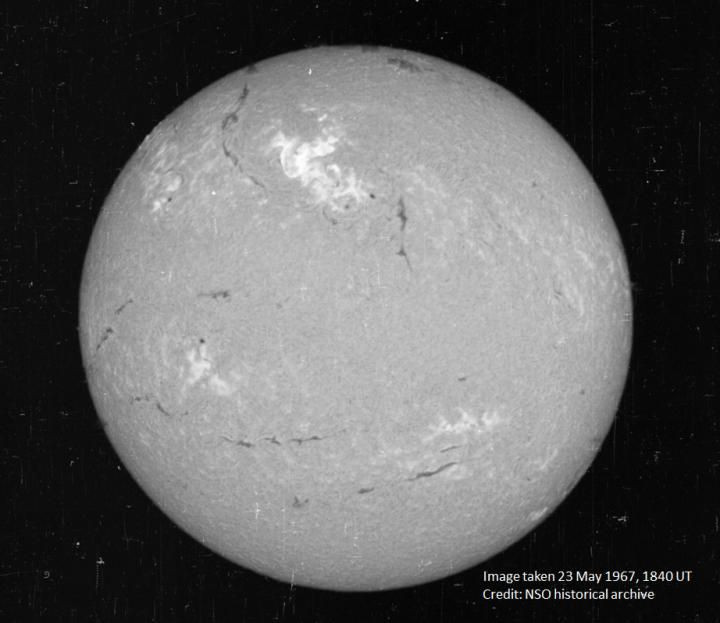Solar Storm Almost Triggered Nuclear War In 1967 Between US And Soviet Union

Almost half a century ago, a powerful solar storm disrupted radar and radio communications at the height of the Cold War. Had experts not monitored the sun’s activity at the time, the United States could have ended up with a disastrous military conflict, leading to a nuclear war between the U.S. and the Soviet Union, a new study revealed.
The U.S. Air Force was preparing for war on May 23, 1967, thinking that the Soviet Union was behind the jamming of its surveillance radars in polar regions. However, military space weather forecasters intervened and informed officials that it was a powerful solar storm that had interrupted the radar and radio communications, researches said in the study, published in the journal Space Weather on Tuesday.
“Had it not been for the fact that we had invested very early on in solar and geomagnetic storm observations and forecasting, the impact [of the storm] likely would have been much greater,” Delores Knipp, a space physicist at the University of Colorado in Boulder and the lead author of the study, said in a statement. “This was a lesson learned in how important it is to be prepared.”
It was the first time retired U.S. Air Force officers involved in forecasting and analyzing the storm collectively described the event publicly in the study, Knipp said, adding that the storm is a classic example of how geoscience and space research are essential to U.S. national security.
Solar flares or storms are powerful bursts of radiation observed over the sun’s surface. The flares eject clouds of electrons, ions and atoms through the corona of the sun into space, which typically reach Earth a day or two after the event.
Although harmful radiation from a solar flare cannot penetrate the Earth's atmosphere to physically affect humans on the ground, the flares — when intense enough — can cause disturbance in the part of the atmosphere where several communications satellites orbit the planet.

On May 18, 1967, a large group of sunspots with intense magnetic fields was spotted in one region of the sun. By May 23, solar forecasters at the North American Aerospace Defense Command (NORAD) observed that the sun was active and likely to produce a major flare.
As the solar flare event actually occurred on May 23, it jammed radars at all three Ballistic Missile Early Warning System (BMEWS) sites in the far Northern Hemisphere, which were designed to detect incoming Soviet missiles, according to researchers.
During the 1960s, the U.S. Air Force operated continuous alert aircraft armed with nuclear-weapons. After the BMEWS radars were jammed, commanders even put additional forces in a “ready to launch” status, thinking the Soviet Union was to blame for the disruptions.
However, experts monitoring the sun’s activity managed to figure out that the three BMEWS sites were in sunlight and could receive radio emissions coming from the sun, suggesting that the radars were being disrupted by the sun, not the Soviet Union.
“This is a grave situation,” Knipp said. “But here's where the story turns: things were going horribly wrong, and then something goes commendably right.”
© Copyright IBTimes 2024. All rights reserved.





















